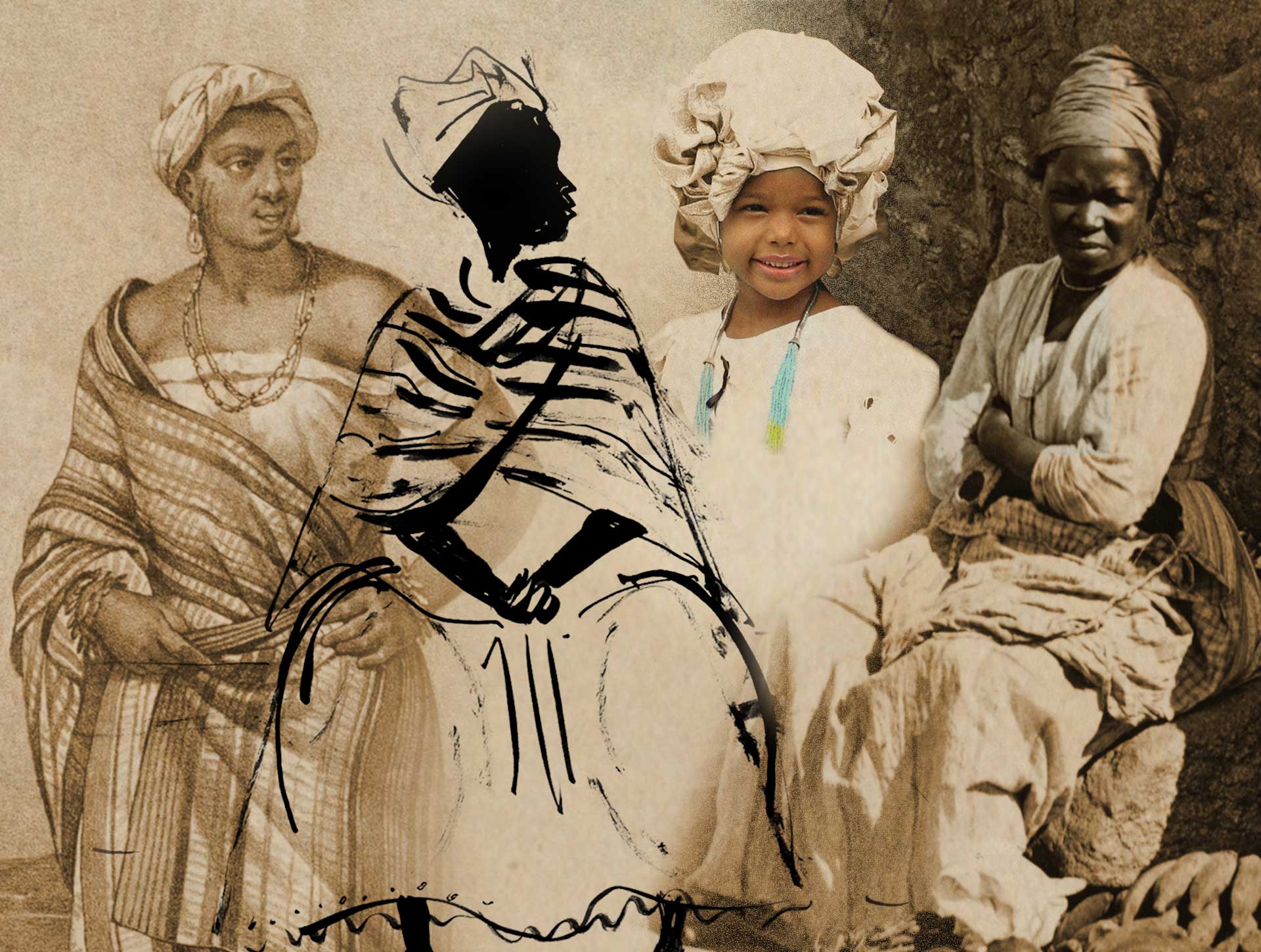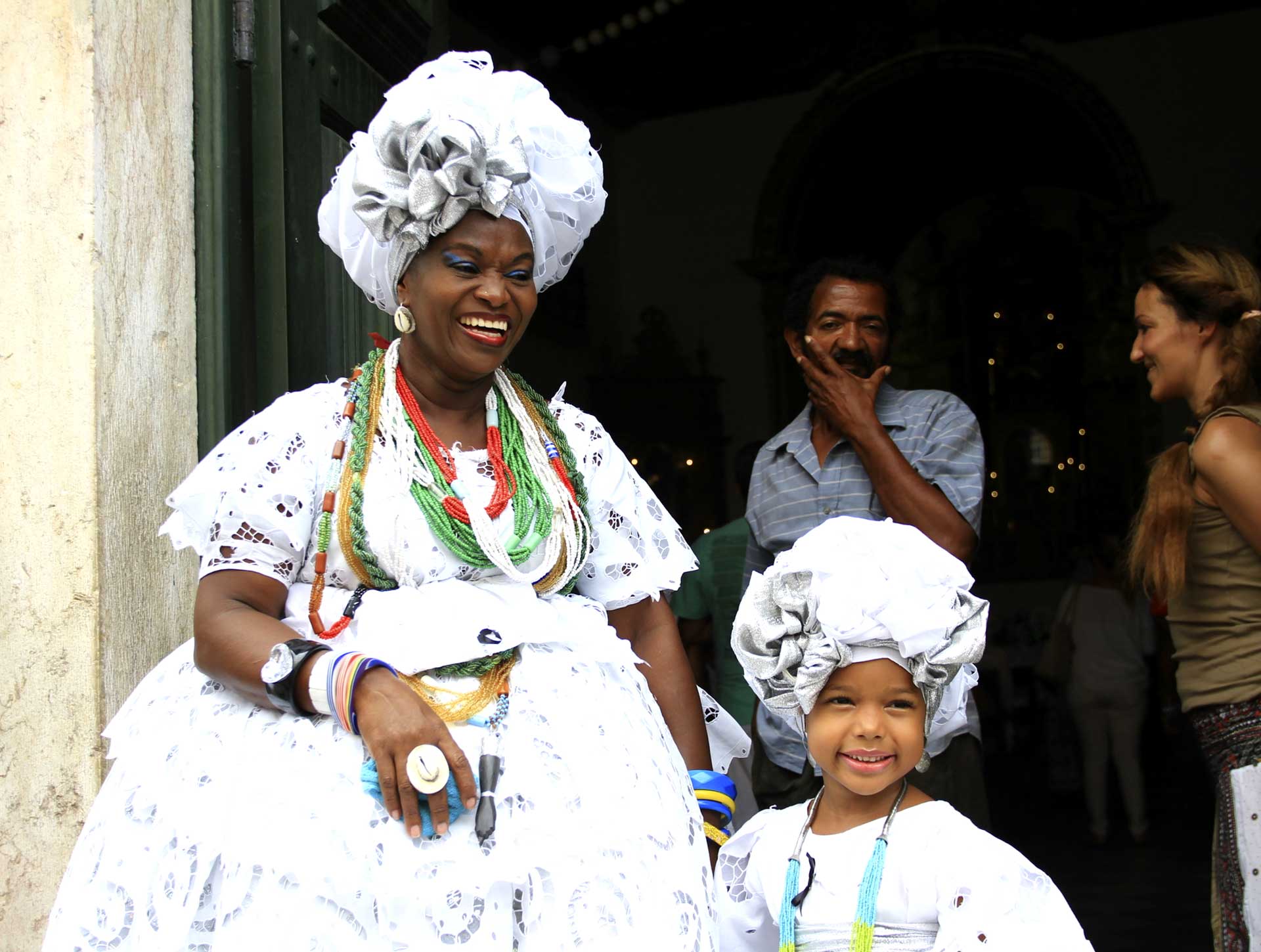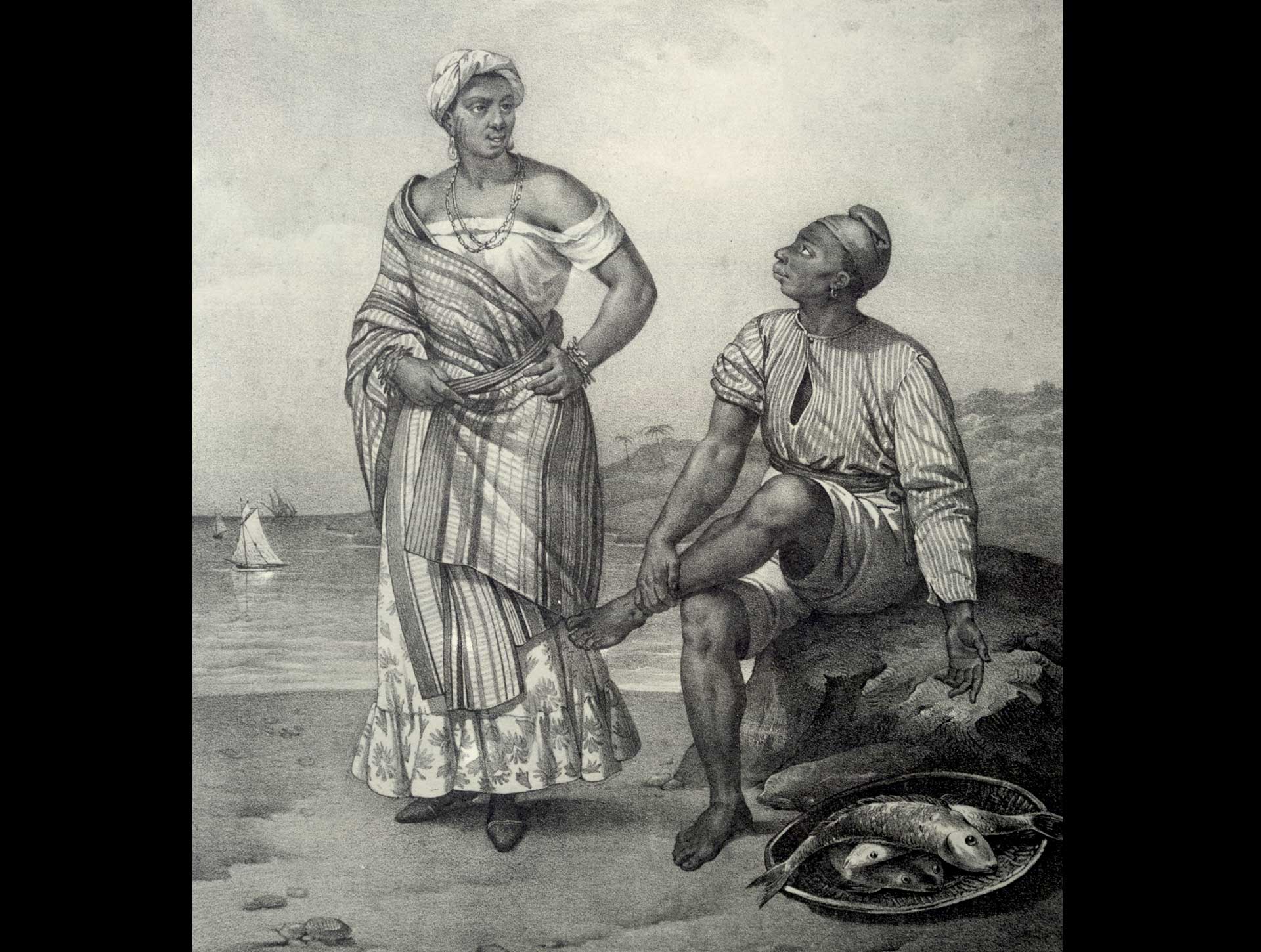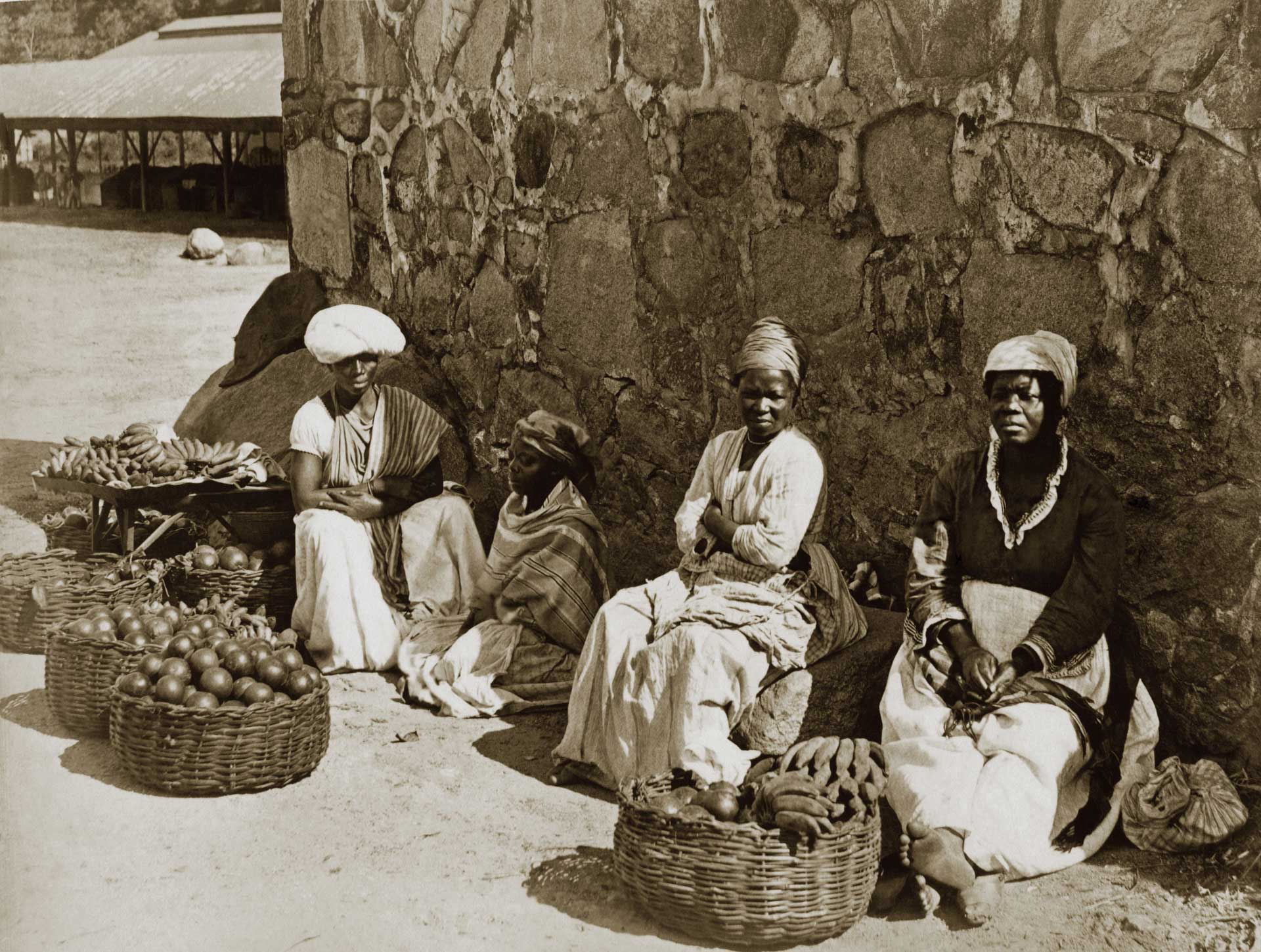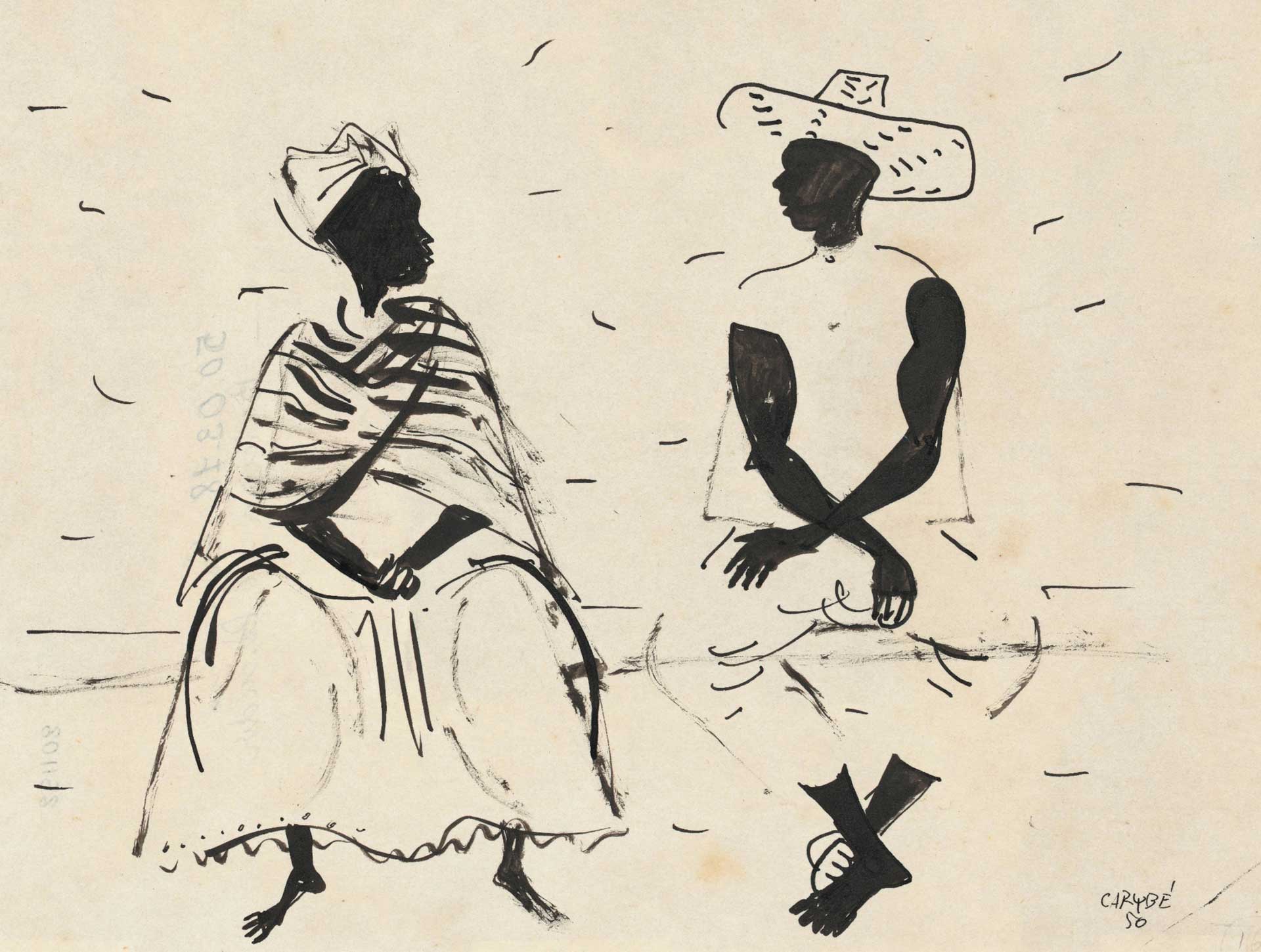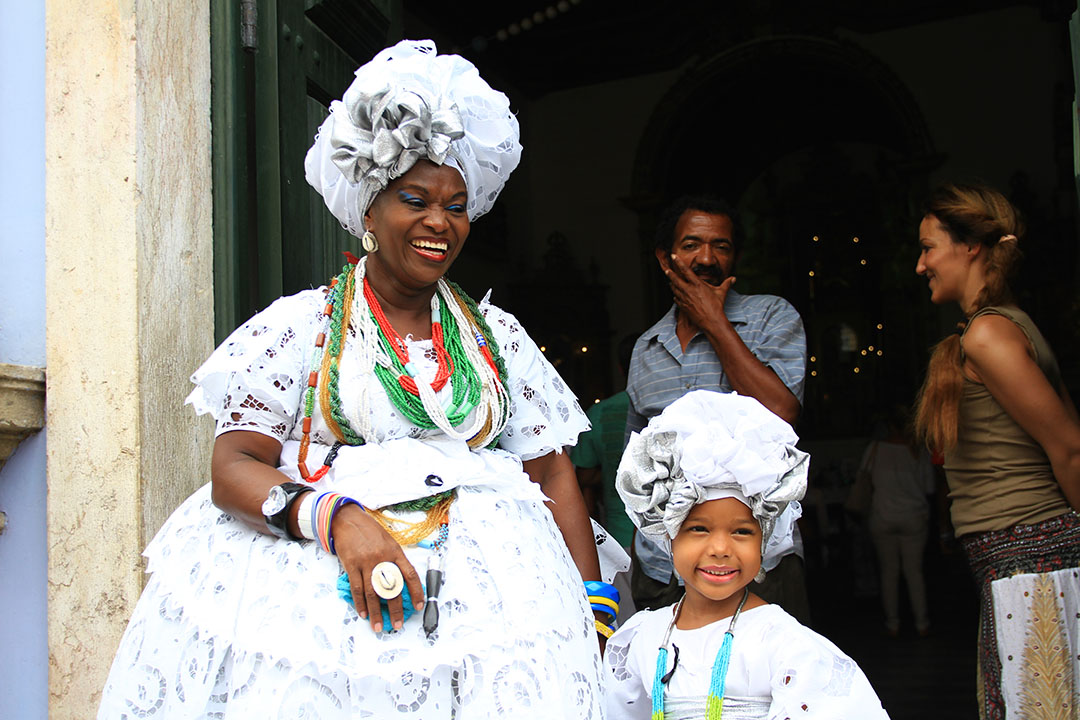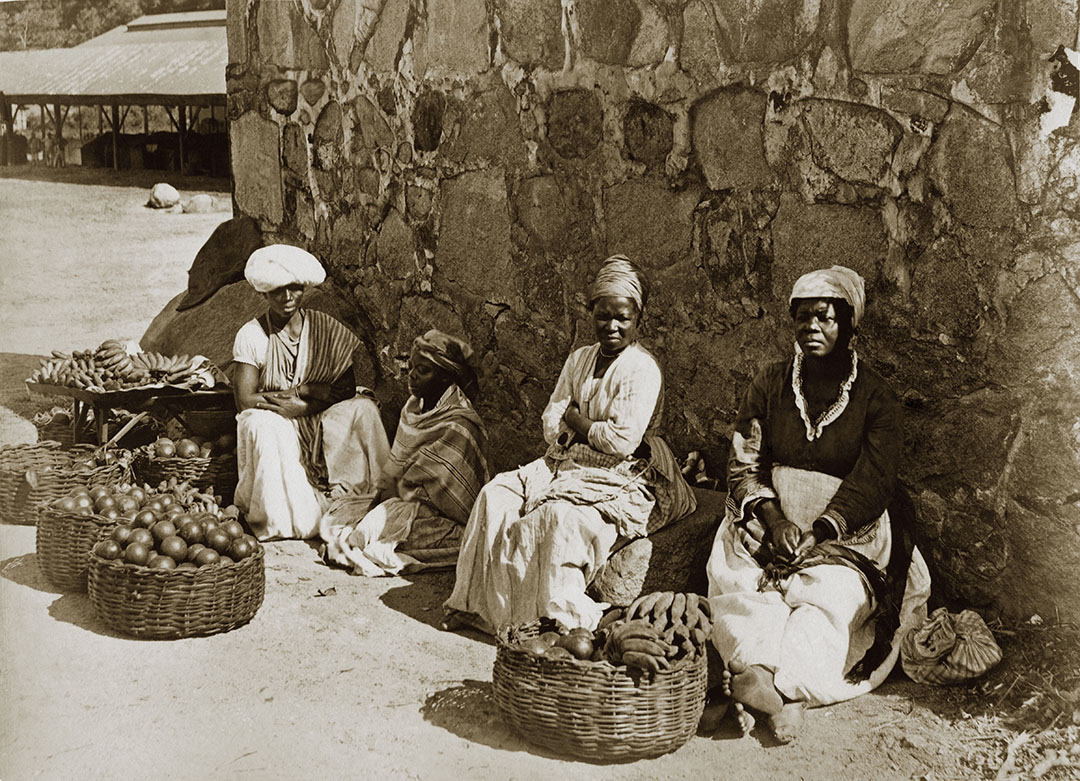PALIMPSESTS
Self-Fashioning and Refashioning
Tags: #city, #subversion, #garments
< Return to Self-fashioning and Refashioning
< Return to Palimpsests
Referenced works
Johann Moritz Rugendas, Nègre & Nègresse de Bahia (1835). Schomburg Center for Research in Black Culture, Photographs and Prints Division, The New York Public Library. For example, and as featured in this 1835 lithograph by Johann Moritz Rugendas,
Hector Bernabó Carybé, Baiana e Pescador (1950). Pen and ink drawing, 21cm x 27cm. Museu de Arte da Bahia / IPAC.
Abiodun, Rowland O., Ulli Beier and John Pemberton. Cloth Only Wears to Shreds: Textiles and Photographs from the Ulli Beier Collection. Amherst, MA: Amherst College Press, 2004.
Abiodun, Rowland. Yoruba Art and Language: Seeking the African in African Art. Cambridge: Cambridge University Press, 2014. Smith, Christen. Afro-Paradise: Blackness, Violence, and Performance in Brazil. Champaign Urbana: University of Illinois Press, 2016.
Hicks, Mary. “Transatlantic Threads of meaning: West African textile entrepreneurship in Salvador da Bahia, 1770-1870,” Slavery & Abolition, 41:4 (2020), 695-722.


